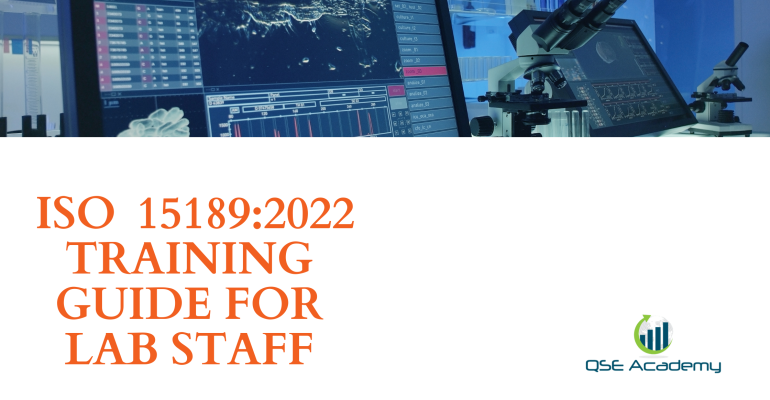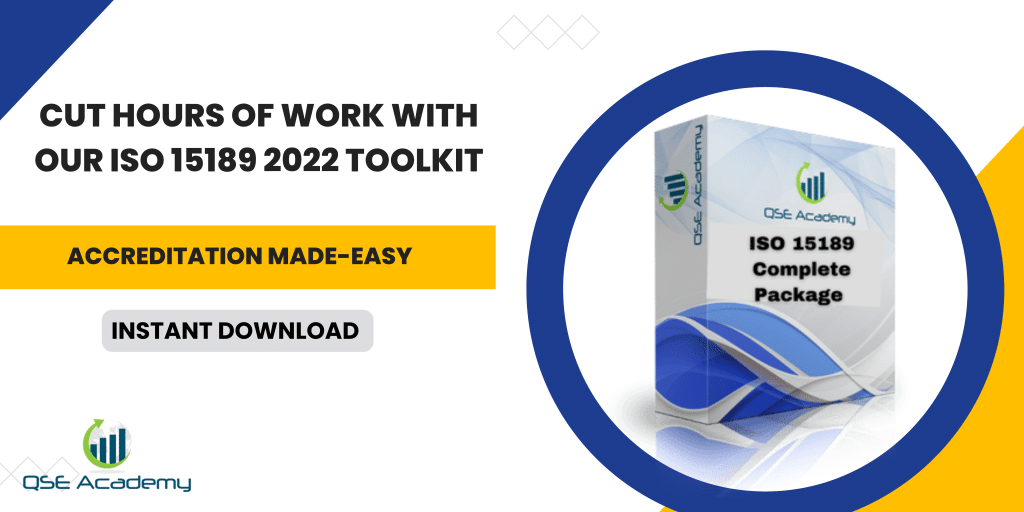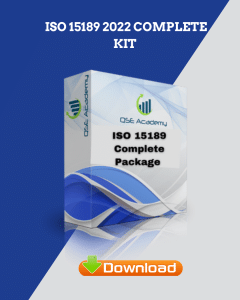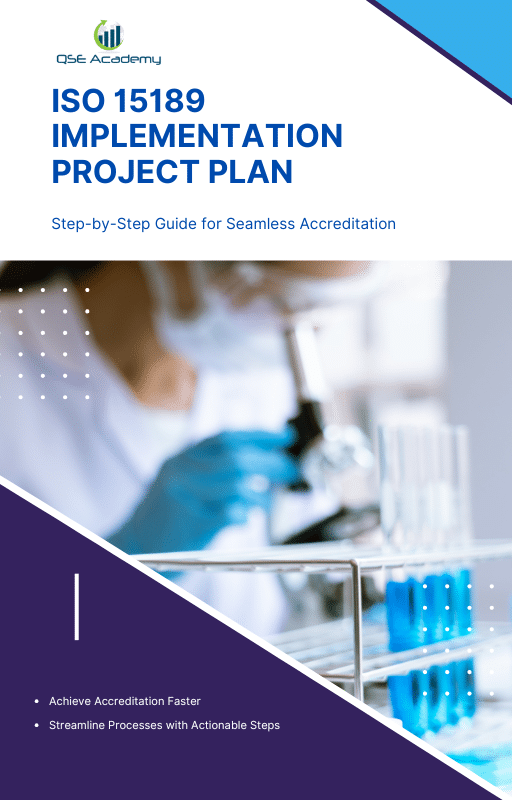ISO 15189:2022 Training Guide for Lab Staff
Last Updated on October 22, 2025 by Hafsa J.
Why Staff Training Is the Backbone of ISO 15189 Compliance
Here’s what I’ve noticed working with medical laboratories: most teams spend weeks perfecting their SOPs, updating policies, and preparing for audits—but forget one key factor that actually makes all those documents work: the people using them.
ISO 15189:2022 is built on competence. A lab can have beautifully written procedures, but if the staff performing the tests don’t fully understand them, compliance quickly falls apart. That’s why training isn’t just a requirement—it’s the backbone of your quality system.
In my experience, labs that treat training as an ongoing, structured process—not a one-off event—perform better in audits and produce more consistent, reliable results. Staff feel confident, assessors see competence, and management gets peace of mind.
In this guide, I’ll walk you through how to design an ISO 15189 training program that actually works—step-by-step, from identifying needs to proving competence.
Now, let’s look at what ISO 15189:2022 really expects when it comes to staff training and competence.
Understanding ISO 15189:2022 Training & Competence Requirements
ISO 15189:2022 makes one thing very clear—competence isn’t optional. Under Clause 6.2 (Personnel), every staff member performing tasks that affect the quality of examination results must be qualified, trained, and regularly evaluated.
That means your laboratory needs to go beyond simply keeping diplomas on file. You need to demonstrate that each person has the right knowledge, skills, and behavior to perform their duties consistently and correctly.
Here’s what that looks like in practice:
-
Defining the competence requirements for every role.
-
Providing structured training and supervision for new and existing staff.
-
Maintaining up-to-date training records and competence evaluations.
-
Reviewing staff performance regularly, especially after nonconformities or method updates.
Pro Tip: Certificates alone don’t prove competence. Auditors look for objective evidence—like observation checklists, test results, or internal audit feedback—to confirm that staff can actually do what they’ve been trained to do.
Common mistake: Labs often focus only on initial training. ISO 15189 expects continual competence monitoring, not a one-time sign-off.
Now that you know what the standard requires, let’s go over how to build a training program that meets those expectations and actually helps your team perform better.
Step-by-Step: How to Develop an ISO 15189 Training Program
Creating a training program doesn’t have to be complicated—it just needs to be consistent and tailored to your lab’s real workflow. The goal is to make sure every team member knows exactly what they’re responsible for, how to do it correctly, and how their role affects quality.
Here’s the process I recommend when setting up a training program for ISO 15189 compliance:
Step 1: Identify training needs.
Start by listing every position in your lab and outlining what knowledge or skills are essential for each. This becomes your baseline.
Step 2: Develop a training matrix.
Link each role to the required competencies—things like sample collection, equipment calibration, reporting, or safety. This matrix will guide all your future training efforts.
Step 3: Create or adopt training modules.
Use a mix of methods: SOP-based walkthroughs, mentorship programs, e-learning, or external workshops. The format doesn’t matter as much as consistency and documentation.
Step 4: Evaluate effectiveness.
After training, assess whether the staff member can perform the task independently and accurately. Observation, testing, or reviewing performance records all work.
Step 5: Keep detailed records.
Log every training session with the topic, date, trainer, and results. These records become evidence during accreditation.
Pro Tip: Blend theory and practice. A short talk on safety is good—but having staff demonstrate PPE use or waste disposal procedures is what truly shows competence.
Example: One small pathology lab I worked with paired new hires with experienced mentors for the first 30 days. Their error rates dropped by half, and their audit feedback praised their structured approach to training.
Once you’ve mapped your training needs, the next step is building a competency matrix to track progress and prove that training is effective.
Building a Competency Matrix (Template Included)
A competency matrix is one of the most practical tools for managing staff training under ISO 15189. It shows, at a glance, who’s qualified to do what, how they were trained, and when their next evaluation is due.
Think of it as your lab’s training dashboard—it keeps things organized, transparent, and audit-ready.
Here’s a simple example to get started:
| Position | Competency Area | Training Method | Evaluation Method | Frequency | Status |
|---|---|---|---|---|---|
| Medical Technologist | Sample collection | SOP walkthrough, observation | Direct observation checklist | Annual | Ongoing |
| Quality Officer | Internal audit process | In-house workshop | Audit performance review | Every 2 years | Completed |
| Laboratory Manager | Management review | Online session + document review | Recorded meeting participation | Annual | Pending |
When assessors see a well-maintained matrix like this, they know your lab takes competence seriously. It also helps you spot skill gaps early—before they become audit findings.
Pro Tip: Link your competency matrix with your document control system. When an SOP is revised, it should automatically trigger a review of affected staff competencies.
Common mistake: Letting the matrix sit untouched for months. Update it after every new hire, role change, or refresher training.
Once your matrix is in place, the next challenge is keeping those competencies current through ongoing assessment and refresher training.
Assessing and Maintaining Competence
Training isn’t a “one and done” activity—competence has to be demonstrated and maintained over time. ISO 15189 expects you to verify that your staff can consistently perform their assigned duties and that they stay current with updated methods, instruments, and procedures.
Here’s how I guide labs to manage this effectively:
1. Observe performance regularly.
Supervisors or section heads should directly observe staff performing key tasks—like calibrating equipment or reviewing test results—and document their findings.
2. Use objective assessments.
Written quizzes, blind sample tests, or participation in proficiency testing can all serve as proof of ongoing competence.
3. Review outcomes.
If an internal audit, complaint, or nonconformity points to a skill issue, it’s a sign that retraining might be needed.
4. Schedule refresher training.
Methods evolve, equipment changes, and even experienced staff forget steps over time. Plan periodic refreshers, especially in high-risk areas like sample handling or quality control.
Pro Tip: Keep competence assessments simple but structured—use short forms or digital checklists that include task name, evaluator, date, and result.
Common mistake: Assuming that long tenure equals competence. ISO 15189 wants proof, not assumptions. Even seasoned technologists need documented evidence of competence to meet the standard.
Once your team’s competence is regularly monitored, the next step is connecting all that training activity to your quality management system.














